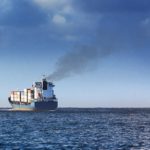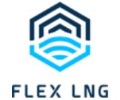Crew Familiarisation is critical when taking over a vessel
 When a vessel changes ownership and/or manager, it can take some considerable time before the new crew and management are fully familiar with the vessel. Familiarisation starts as soon as ship’s staff get onboard and must be completed before sailing.
When a vessel changes ownership and/or manager, it can take some considerable time before the new crew and management are fully familiar with the vessel. Familiarisation starts as soon as ship’s staff get onboard and must be completed before sailing.
The ISM Code requires that all crew receive a proper familiarisation on the vessel prior to sailing.
ISM Code 6.3 The Company should establish procedures to ensure that new personnel and personnel transferred to new assignments related to safety and protection of the environment are given proper familiarization with their duties. Instructions which are essential to be provided prior to sailing should be identified, documented and given.
Members are reminded that to sail the vessel safely, be ready for the possible PSC inspection at the first port and the Club’s required condition survey, below are some essential areas to be familiar with.
Crew-familiarisation
General Routines– all Officers and Crew:
- PPE Matrix
- All alarm signals – General, Fire, MOB, Abandon Ship, CO2, etc.
- All accesses and emergency escape routes
- All watertight doors – all locations and alarm panel
- Emergency muster – all emergency duties explained
- Boat muster – lifeboat, liferaft, Marine Evacuation Systems launching procedures and duties explained
- Fire detection system – locations of fire alarm panel and fire detectors and operation procedure
- Automatic door release mechanisms on fire doors
- Fire-fighting appliances – all locations and uses
- Life-saving appliances – all locations and uses
- First aid equipment
- Pollution control
- Security duties
- Internal communication system
- Enclosed space locations and entering procedure
- Safety Data Sheets – all locations and uses
- Location of SMS Manual and Safety Training Manual
- DPA contact details
Deck Officer
- Navigational Systems and Equipment
- Telegraph and Bridge control of Main Engine (Changeover procedure to engine room control)
- Thruster(s) control
- Steering system – Manual, Auto-pilot, changeover to Emergency
- Manoeuvring characteristics and stopping distances
- Whistle controls
- Navigational lights, signalling lamp and bridge search lights
- Deck, overside and bridge lighting panels
- GMDSS Equipment including VHF equipment
- Course and Engine telegraph recorders
- VDR
- Bridge alarms and indicators
- Cargo securing arrangement
- Ballast system and ballast water management plan
- Cargo space bilge system and water ingress alarm system
- Fixed gas detection system
- IG system
- Ventilation system shutdowns
- Deck machineries and lifting appliances control and emergency stops
- Hatch covers operation
- Mooring system
Engineering Officer
- Main Engine start (from bridge, ECR and locally), changeover of Main Engine control
- Generators (remote and local control, paralleling operation) and emergency diesel generator
- Steering gear – Manual and changeover to Emergency mode
- Oily water separator and engine room bilge system
- Boilers
- Purifiers
- Main and emergency air compressors
- Pumps start (Manual/Automatic/Stand-by)
- Fuel and lub. oil transfer and bunkering procedure
- M.E / D.G / Boiler fuel change
- Engine room monitoring and alarm system
- Restoring from electrical circuits trip
- Quick closing valves and emergency shutdowns
- Ballast system and ballast water management plan
- IG system
- Ventilation system
- Deck machineries and lifting appliances control and emergency stops
- Hatch covers operation
Deck Crew
- Deck machineries and lifting appliances control and emergency stops
- Hatch covers operation
- Steering system
- Mooring system
- Cargo securing arrangement
- Sounding arrangements of bilge and ballast
Engine Crew
- Engine room equipment
- Main and emergency air compressors
- Quick closing valves and emergency shutdowns
- Ballast system
- Sounding arrangements of bilge
*Additional safety equipment as per vessel type: Polar Vessels, Oil Tankers, Chemical Tankers, Gas Tankers, Passenger Vessels, Helicopter operations, Fast Rescue Craft, Ro-Ro (Ventilation System), Ro-Ro Pax (Means of Access)
Familiarisation for a 100% change of crew requires extra attention. Bearing in mind all vessels are unique, Members should make sure they have the correct routine for their own vessels.
Source: West P&I Club

 Hellenic Shipping News Worldwide Hellenic Shipping News Worldwide, Online Daily Newspaper on Hellenic and International Shipping
Hellenic Shipping News Worldwide Hellenic Shipping News Worldwide, Online Daily Newspaper on Hellenic and International Shipping





















 PG-Software
PG-Software